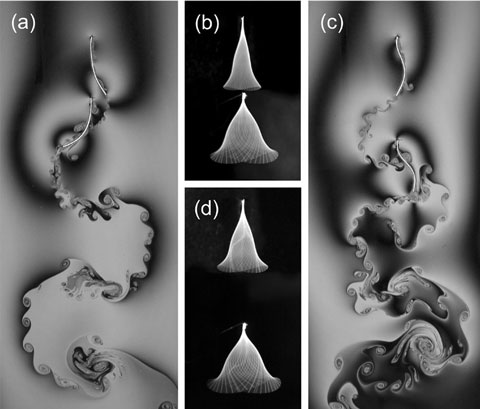Fluid Flags

Tiny flag-shaped filaments undulate in a fluid, leaving the wakes seen in the outer panels. The two center panels reveal the flags' motion through long exposure photography.
Image Credit: L. Ristroph and J. Zhang/PRL
November 5, 2013
When flags flap in the wind, their varying shape affects how easily the flag will flow through a fluid (typically air). To mimic this motion in the lab, researchers Leif Ristroph (Cornell) and Jun Zhang (Courant Institute) placed tiny flag-shaped filaments in a soap film.
You can see the results of their work in the images above that were originally published in 2008. The outer panels show the wakes of the flapping flags, and the two center panels are long-exposure photographs of the flags' motions.
When one flag followed another through the soap film, the leader experienced significantly less drag (fluid resistance) than its follower. This counter-intuitive result may help explain the movements of schools of fish or flocks of birds.














